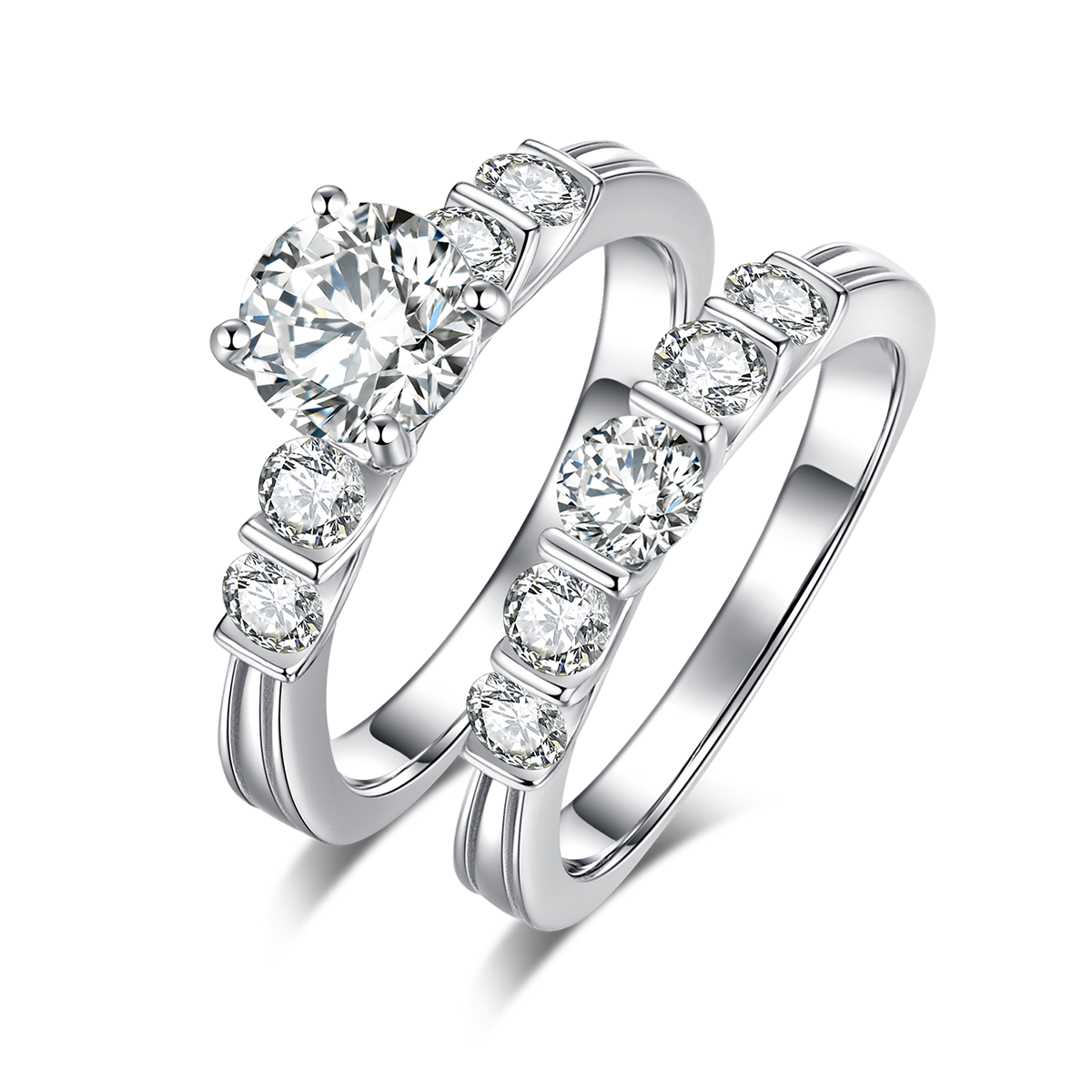
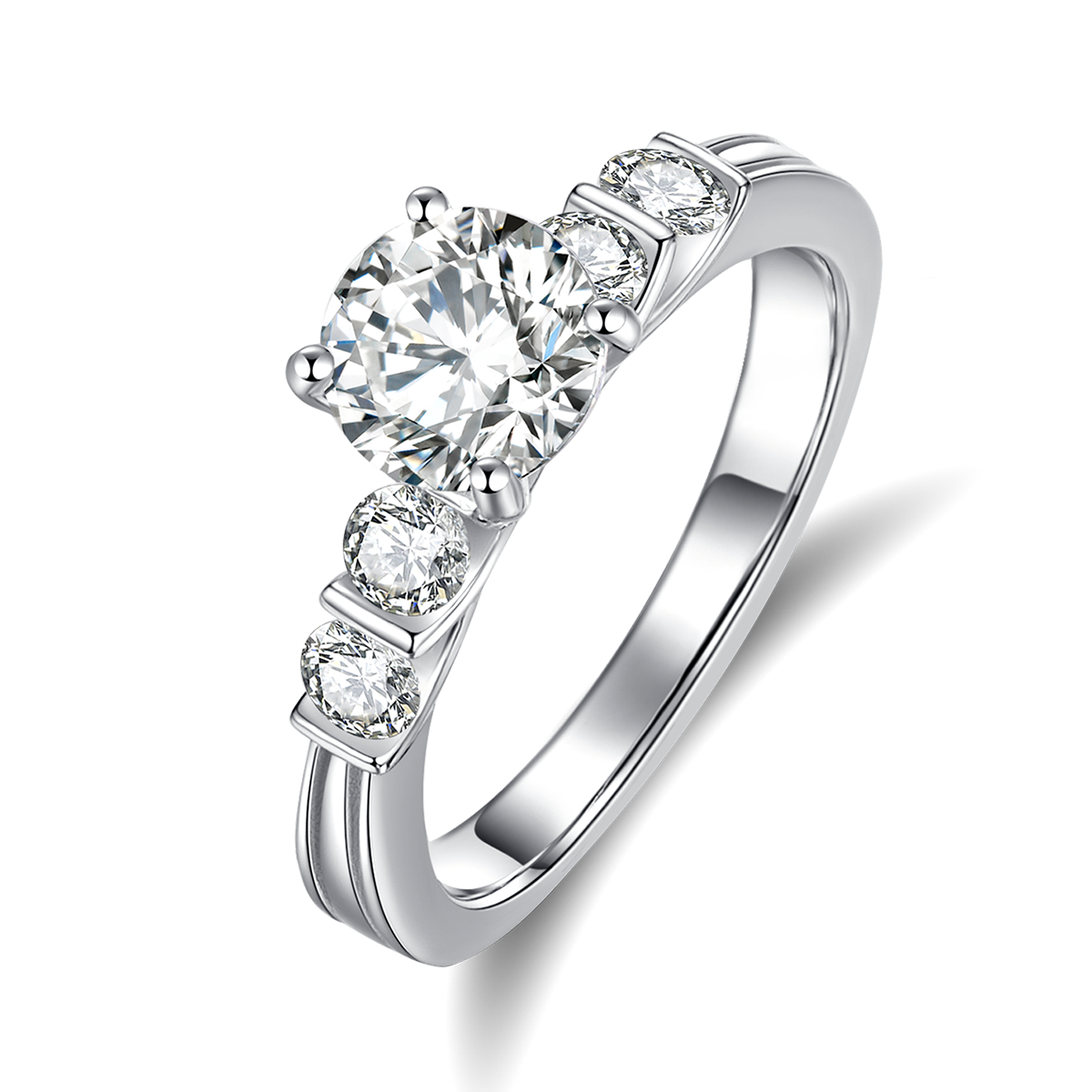
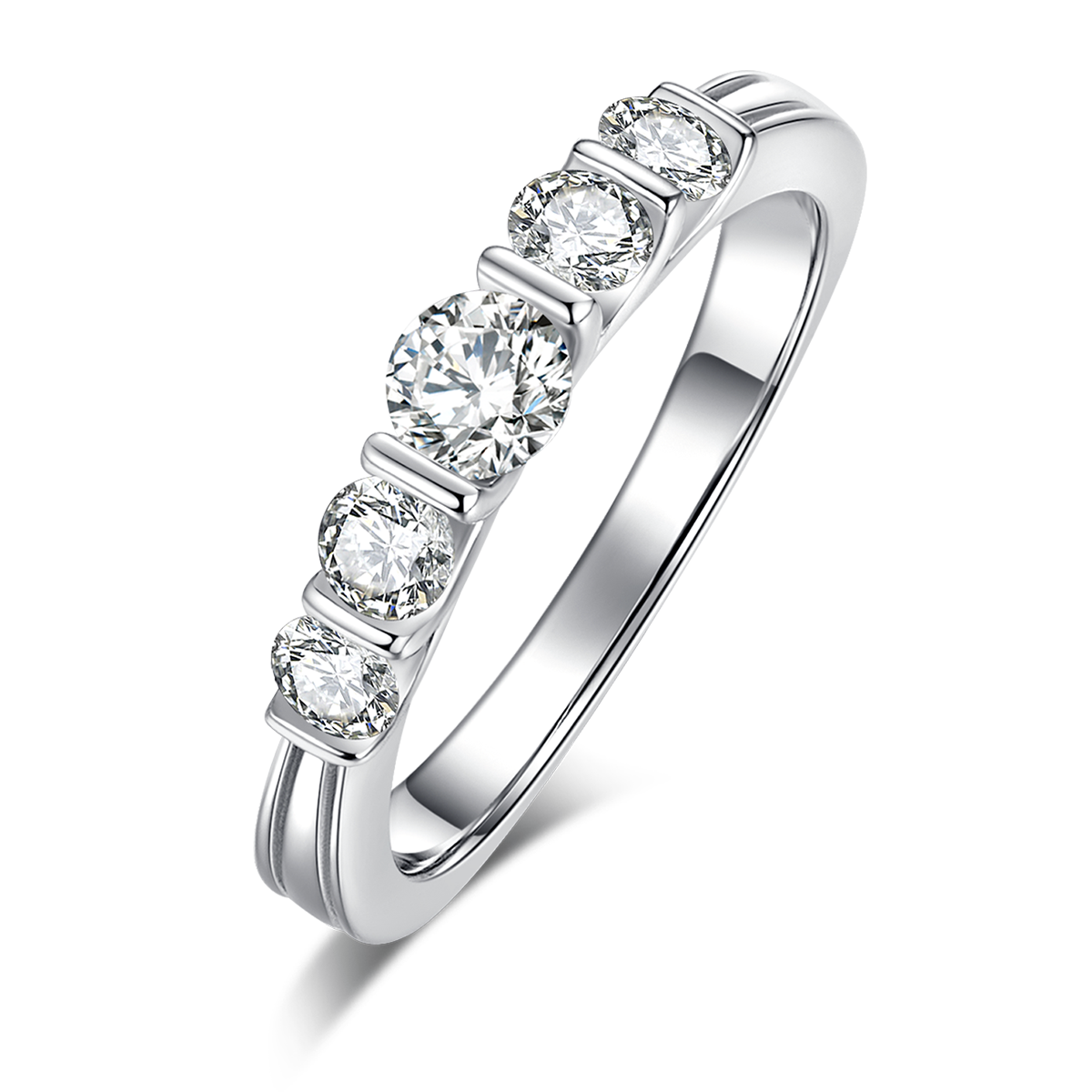
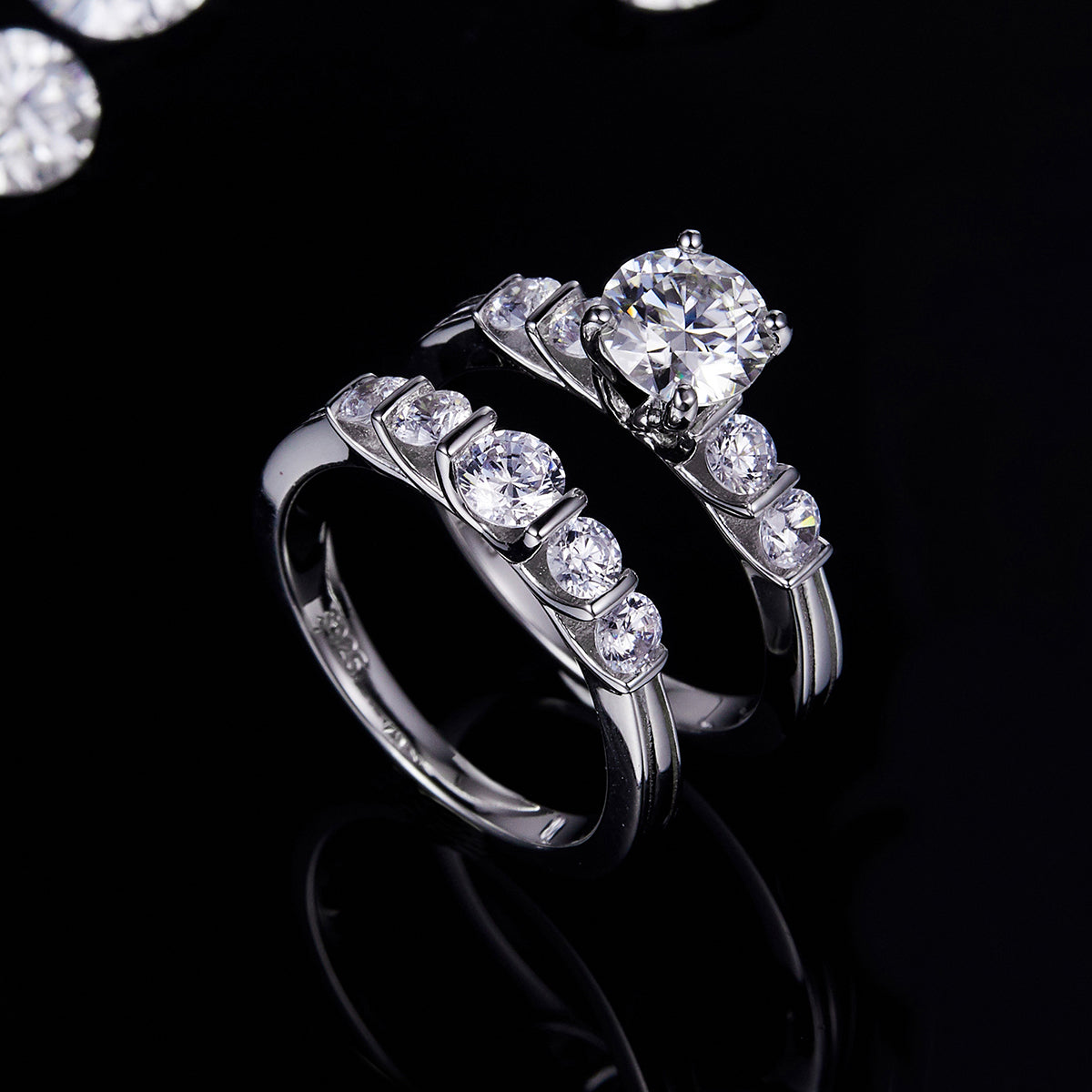
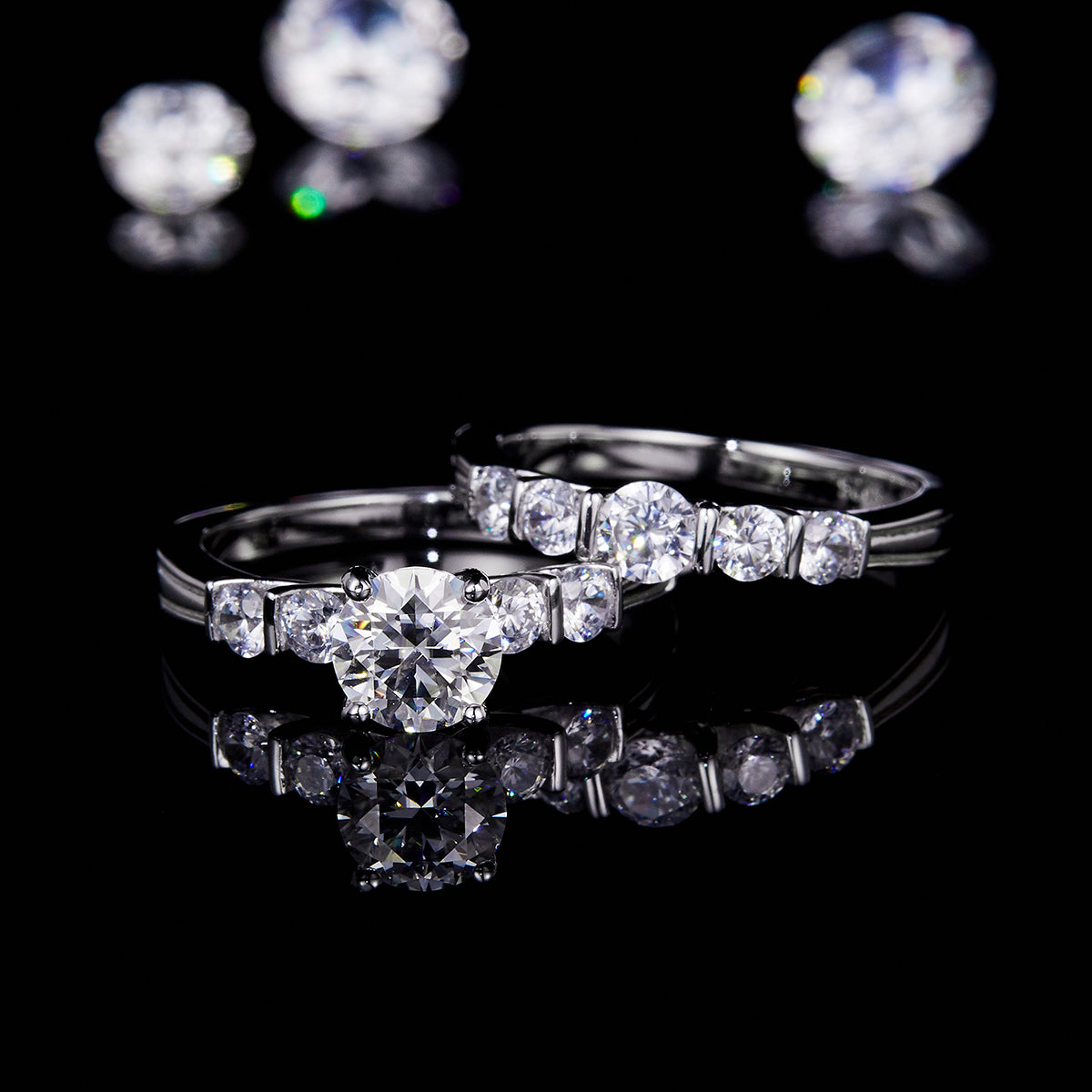
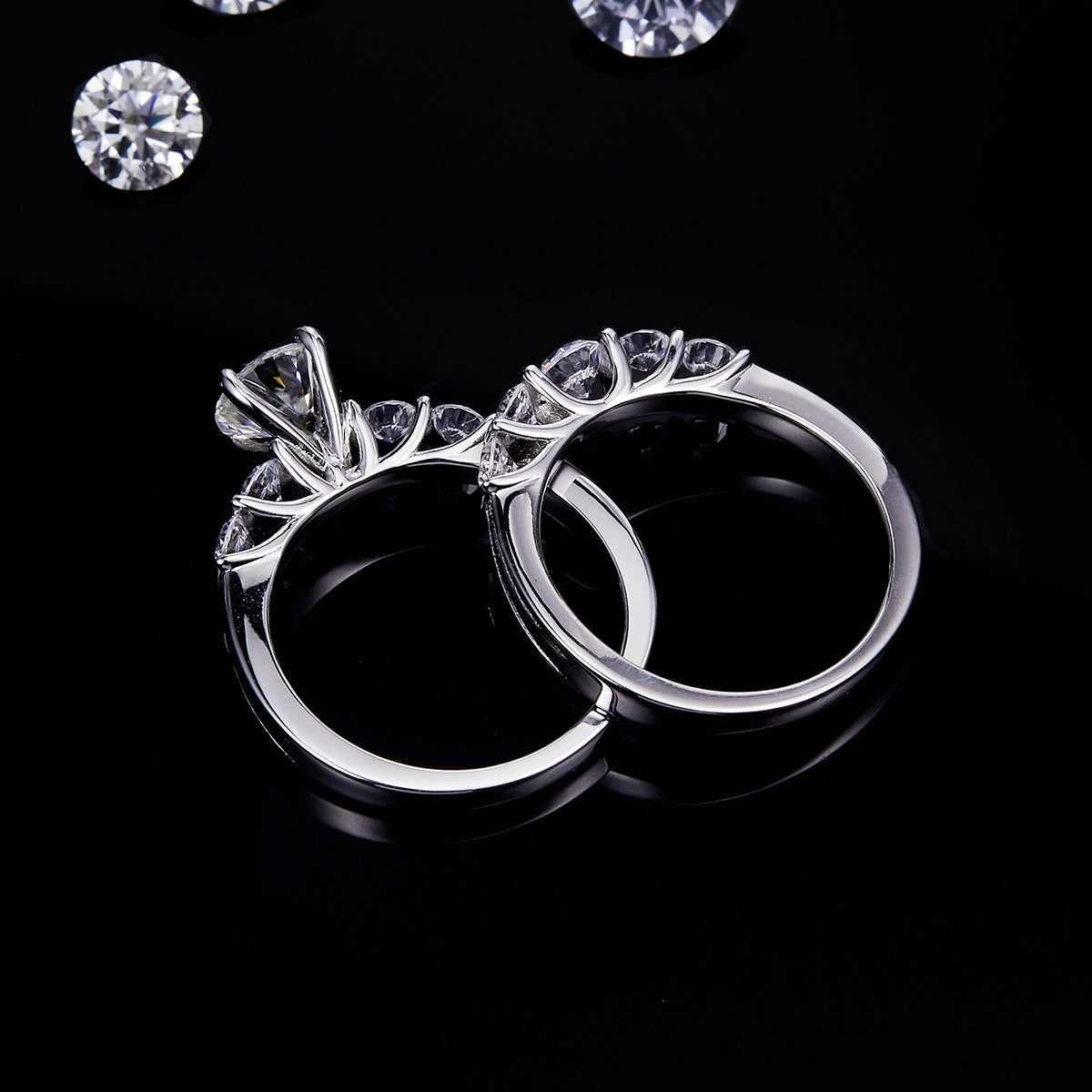
Four Claws 1 carat Lab-Grown Diamond Ring in 18K White Gold main and side stackable ring set
Product details
Crafted in high-quality 18K White Gold, this stunning main and side stackable ring set design with a 1 carat round brilliant lab-grown diamond main stone. The side ring design with 0.3 carat round brilliant lab-grown diamond main stone, All rings in a D/E/F color and VVS/VS clarity.
|
Product number
|
N0026
|
|
Gem
|
Lab-grown Diamond
|
|
Main Ring Main Stone carat weight
|
1 carat
|
|
Main Ring Side Stone carat weight
|
0.1 carat *4
|
| Main Ring Total carat weight | 1.4 carat |
| Side Ring Main Stone carat weight | 0.3 carat |
| Side Ring Side Stone | 0.1 carat *4 |
| Side Ring Total carat weight | 0.7 carat |
| Cutting Style | Round Brilliant |
|
Colour Grade
|
D/E/F
|
|
Clarity Grade
|
|
|
Cut Grade
|
3EX
|
|
Electroplating
|
|
|
18K White Gold
|
|
|
Logo
|
Au750
|
| Certificate | IGI |
Size Chart
| HK Size | Diameter in mm | Circumference in mm | AU & NZ Size | US Size |
| 8 | 14.8 | 46.5 | H | 4.0 |
| 9 | 15.2 | 47.7 | I | 4.5 |
| 10 | 15.5 | 48.7 | J | 4.8 |
| 11 | 15.9 | 49.9 | K | 5.3 |
| 12 | 16.2 | 50.9 | K1/2 | 5.8 |
| 13 | 16.6 | 52.1 | L1/2 | 6.0 |
| 14 | 17.0 | 53.4 | M1/2 | 6.5 |
| 15 | 17.3 | 54.3 | N1/2 | 7.0 |
| 16 | 17.6 | 55.3 | O | 7.3 |
| 17 | 18.0 | 56.5 | P | 7.8 |
| 18 | 18.4 | 57.8 | Q | 8.3 |
| 19 | 18.7 | 58.7 | R | 8.8 |
| 20 | 19.1 | 59.9 | S | 9.0 |
| 21 | 19.4 | 60.9 | S1/2 | 9.5 |
A Guide to Laboratory Grown Diamond
A lab-grown diamond (also known as a synthetic diamond or man-made diamond) is a diamond that is created in a laboratory rather than being formed naturally in the Earth. Despite the difference in origin, lab-grown diamonds have the exact same physical, chemical, and optical properties as natural diamonds.
Here’s more detailed information about lab-grown diamonds:
1. Formation Process:
Lab-grown diamonds are created using two main methods that mimic the natural processes that occur deep within the Earth:
-
High Pressure High Temperature (HPHT): This method simulates the intense heat and pressure that natural diamonds experience over millions of years in the Earth’s mantle. A small diamond seed is placed in a chamber where it is exposed to extreme pressure and temperature, allowing carbon to crystallize and form a diamond.
-
Chemical Vapor Deposition (CVD): In this method, a diamond seed is placed in a chamber filled with a carbon-rich gas (like methane). The gas is heated, breaking it down and allowing carbon atoms to deposit onto the seed, building up layers of diamond.
2. Composition:
- Lab-grown diamonds are made of pure carbon and have the same crystal structure as natural diamonds. They are chemically identical to natural diamonds, and their hardness, brilliance, and clarity are virtually identical as well.
3. Appearance:
- Lab-grown diamonds look identical to natural diamonds. They sparkle the same, reflect light in the same way, and can have the same color and clarity as mined diamonds. Because they are grown in a controlled environment, lab-grown diamonds can often be made with fewer impurities (inclusions) than natural diamonds, which could result in a higher-quality appearance.
4. Price:
- Lab-grown diamonds tend to be significantly less expensive than natural diamonds, often by 20-40% or more, depending on the size and quality. This price difference is mainly due to the fact that lab-grown diamonds are produced in a lab where the process is more controlled and efficient compared to the natural formation of diamonds over millions of years.
5. Ethical Considerations:
- Many people opt for lab-grown diamonds because they are seen as a more ethical and sustainable option compared to mined diamonds. The process of mining natural diamonds can have significant environmental impacts, and in some cases, it is associated with human rights issues (e.g., conflict diamonds). Lab-grown diamonds eliminate these concerns, as their production does not involve mining.
6. Certification:
- Just like natural diamonds, lab-grown diamonds can be certified by gemological labs like the GIA (Gemological Institute of America) or the IGI (International Gemological Institute). These labs issue certificates that detail the diamond’s cut, color, clarity, and carat weight—often with a note that it is a lab-grown diamond.
7. Durability:
- Lab-grown diamonds are just as durable as natural diamonds. They rank 10 on the Mohs scale of hardness, which means they are incredibly tough and resistant to scratching or damage.
8. Uses:
- Lab-grown diamonds are used in fine jewelry (engagement rings, necklaces, earrings, etc.), just like natural diamonds. They can also be used for industrial purposes, such as cutting, grinding, and drilling, due to their hardness.
9. Differences from Natural Diamonds:
- Origin: The primary difference is their origin—natural diamonds form deep within the Earth over millions of years, while lab-grown diamonds are created in weeks or months in a controlled lab environment.
- Cost: Lab-grown diamonds are generally more affordable than natural diamonds.
- Environmental Impact: Lab-grown diamonds are considered more sustainable since they don’t require the mining process.
- Resale Value: While lab-grown diamonds can have similar qualities to natural diamonds, they typically have a lower resale value since they are produced in a lab and not as rare as natural diamonds.
Laboratory Grown Diamond Rings in Diamond Stars
Our Laboratory Grown Diamond rings cater to all personal styles. Whether you prefer the classic round brilliant cut Bethany or the stunning marquise cut Stephanie, we have options to fit every lifestyle and aesthetic.
Laboratory Grown Diamond rings offer a significant cost-saving compared to mined diamonds, especially for those seeking higher carat weights.
At Diamond Stars, our Laboratory Grown Diamond stones are carefully selected for their clarity grade of VVS1-2/VS1-2, their color grade of D/E/F color, and excellent cut grade, ensuring a brilliant shine comparable to diamonds.
A International Gemological Institute (IGI) Report is provided with Laboratory Grown Diamond rings over 0.5 carats.

Delivery Instruction
Manufacturing time
Usually our manufacturing time is estimated to be 1-7 working days.
We offer free shipping to all regions in New Zealand. Upon completion of the manufacturing process, we will dispatch the item through a courier service, with delivery times varying between 1-10 business days depending on your location. A tracking number will be provided via email once your package is shipped, allowing you to track your shipment. Additional courier fees will apply for international customers.
